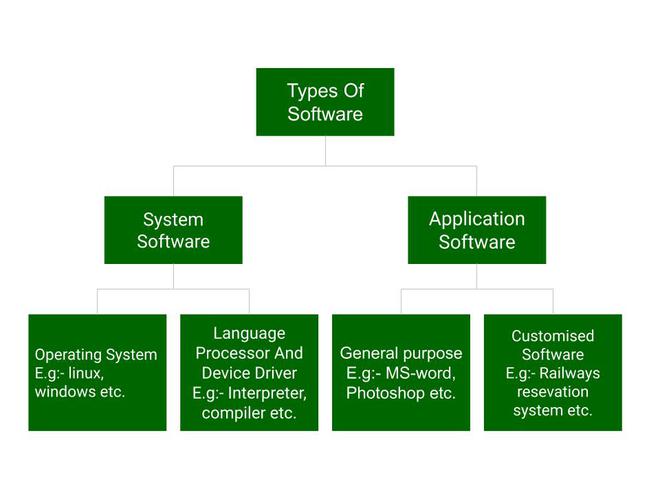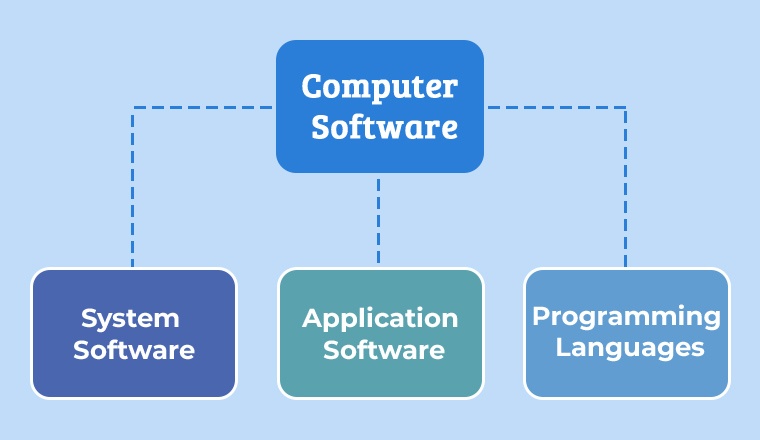Computer software is the backbone of modern technology, enabling computers to perform a wide range of tasks efficiently. From operating systems to productivity tools and entertainment software, there are various types of computer software designed to meet different needs and purposes. This article delves into the diverse world of computer software, exploring its various types, functions, and applications.
Operating Systems
Moreover, operating systems serve as the foundation of computer software, providing the interface between hardware components and user applications. Examples of popular operating systems include Microsoft Windows, macOS, and Linux. These systems manage hardware resources, facilitate communication between software applications and hardware devices, and provide a platform for running user programs.

Productivity Software
Productivity software encompasses a range of applications designed to enhance efficiency and streamline workflow. This category includes word processing programs like Microsoft Word, spreadsheet software such as Microsoft Excel, presentation tools like Microsoft PowerPoint, and email clients like Microsoft Outlook. Additionally, productivity software enables users to create, edit, and organize documents, spreadsheets, presentations, and emails, making it essential for business, education, and personal use.
Graphics and Multimedia Software
Graphics and multimedia software are used to create, edit, and manipulate images, videos, and audio files. Examples of graphics software include Adobe Photoshop for image editing, Adobe Illustrator for vector graphics, and CorelDRAW for graphic design. Users utilize multimedia software such as Adobe Premiere Pro and Final Cut Pro for video editing, while popular audio editing tools like Adobe Audition and Audacity facilitate audio editing tasks. Graphics and multimedia software are essential for creative professionals, including graphic designers, photographers, videographers, and musicians.
Security Software
Security software plays a crucial role in protecting computers and data from malware, viruses, and other cyber threats. Antivirus programs like McAfee, Norton, and Avast scan for and remove malicious software from the system, while firewall software like Windows Defender and ZoneAlarm monitor and control network traffic to prevent unauthorized access. Additionally, encryption software like BitLocker and VeraCrypt encrypts sensitive data to safeguard it from unauthorized access. Security software is essential for maintaining the integrity and security of computer systems and data.
Gaming Software
Gaming software encompasses a wide range of video games designed for entertainment purposes. From casual mobile games to complex multiplayer online games, there are games available for every age group and interest. Popular gaming platforms include PC, console, and mobile devices, with games ranging from action and adventure to sports and simulation. Gaming software provides immersive and interactive experiences for players, allowing them to escape reality and immerse themselves in virtual worlds.
Educational Software
More so, educational software is designed to facilitate learning and skill development in various subjects and disciplines. Examples of educational software include interactive tutorials, language learning programs, educational games, and virtual laboratories. Educators use these tools in schools, colleges, and universities to supplement traditional teaching methods and engage students in active learning. Educational software enhances comprehension, retention, and application of knowledge, making it a valuable resource for educators and learners alike.
Open Source Software
Open source software is developed collaboratively by a community of programmers and made available to the public for free. Examples of popular open-source software include the Linux operating system, the Apache web server, the Mozilla Firefox web browser, and the LibreOffice productivity suite. Open-source software promotes transparency, innovation, and collaboration, allowing users to modify and redistribute the software according to their needs. It provides an alternative to proprietary software and fosters a culture of sharing and collaboration within the software development community.
Conclusion
In conclusion, computer software plays a crucial role in modern technology, enabling computers to perform a wide range of tasks efficiently.Various types of computer software, ranging from operating systems and productivity tools to security software and entertainment applications, have been designed to meet different needs and purposes. By understanding the diverse world of computer software, users can leverage the power of technology to enhance productivity, creativity, security, and learning in their personal and professional lives.

